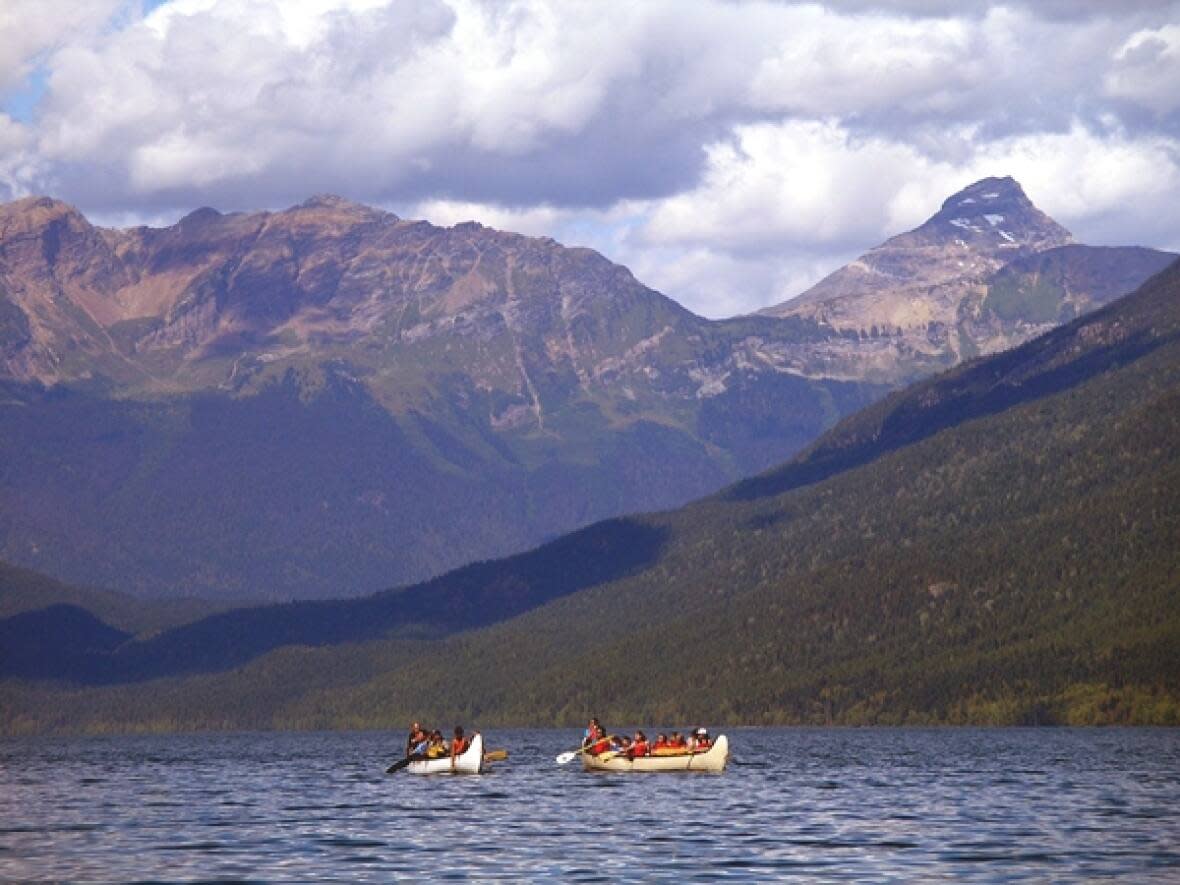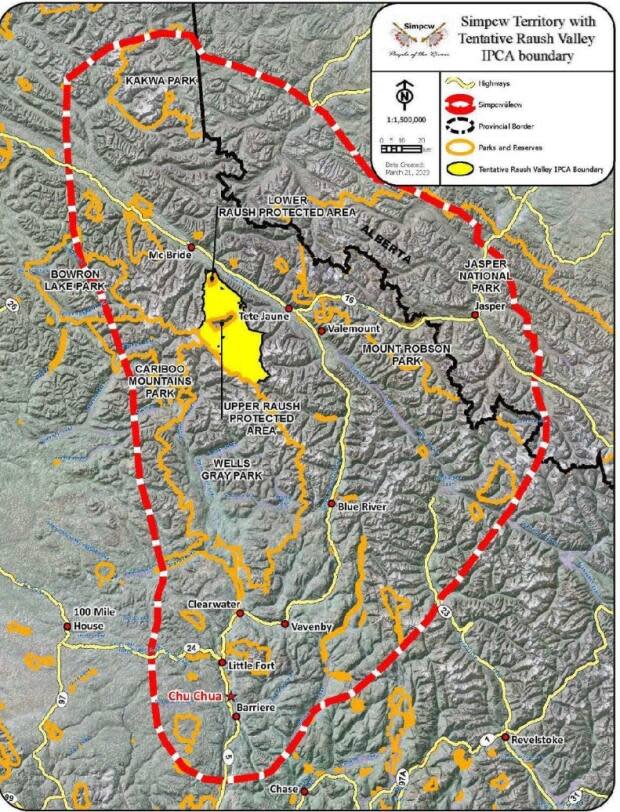Simpcw First Nation declares watershed as Indigenous conservation area

The Simpcw First Nation has become the latest community to declare a part of its traditional territory near the B.C.-Alberta border to be protected from logging and other extractive activities.
On Monday, the First Nation announced it had declared the Raush Valley watershed — home to rare temperate rainforests located in the Rocky Mountains, halfway between Valemount and McBride — as an Indigenous Protected and Conserved Area (IPCA), based on what it says is the community's inherent right over its unceded territory.
"Designating the Raush Valley as an IPCA is a commitment to Simpcw's intentions to conserve this biodiverse valley, and to protect Símpcwemc (Simpcw peoples') traditional and ongoing use of the area," the community said in its press release.
IPCAs, while identified by Indigenous nations through Indigenous law, often involve agreements struck with Crown governments which typically help fund operations, including land guardian programs. Whether those agreements come to fruition usually hinges on governments endorsing the model.

The concept of IPCAs dates back to 2018, when the Indigenous Circle of Experts, a federally-funded group, produced a report defining the area — including that they be Indigenous-led, help Indigenous people reconnect with the land, and conserve cultural keystone species, all to line up with Ottawa's own conservation and climate change targets.
Three IPCAs have been established since, including Ts'udé Nilįné Tueyata, Edéhzhíe and Thaidene Nëné in N.W.T. Last month, the Ross River Dena Council proposed an IPCA in Yukon.
Raush Valley a 'heaven on earth': chief
Simpcw Kúkwpi7 George Lampreau says his community's declaration aims to preserve the cultural value of the 68-square-kilometre Raush Valley.
"It's just heaven on earth," he told host Shelley Joyce on CBC's Daybreak Kamloops, adding that the valley served as Simpcw peoples' refuge from smallpox brought in by early European settlers.
Lampreau also says the Regional District of Fraser Fort George, headquartered in Prince George, hasn't properly consulted the First Nation before allowing logging activities to happen in the Raush Valley.
"So we decided to push back and change it into an Indigenous Protected and Conserved Area, due to the history we have wanting to keep it pristine," he said.
Lampreau says the First Nation will work with Valemount Mayor Owen Torgerson and McBride Mayor Eugene Runtz to come up with a Raush Valley conservation plan that all stakeholders can benefit from, such as developing ecotourism in the area.
"Quick thought out of my head is more around ecotourism hiking, reviving some traditional sites in there for the tourists to see how we used to live, potentially a traditional cultural village.
"There won't be any major development in there unless we figure it'll be a benefit to us," he said.
The chief adds that the First Nation has notified B.C.'s Associate Deputy Minister of Forests Eamon O'Donoghue of its intention to establish the Raush Valley as an IPCA.
"It's been positive — we haven't heard any backlash from anyone."
In an emailed statement to CBC News, B.C.'s Ministry of Water, Land and Resource Stewardship says the Simpcw First Nation's IPCA declaration won't change how the province currently uses the land in Raush Valley, but the province is willing to work with the community in preserving the land.


